Chihuahua breed history

Chihuahua dogs have been known for a long time. Lovely dogs won the hearts of people with their playfulness and loyalty. Films are made about them, praising their courage and ingenuity. Dogs of this breed can often be found in the hands of bohemians. These cute creatures with a long history will be discussed in our article.
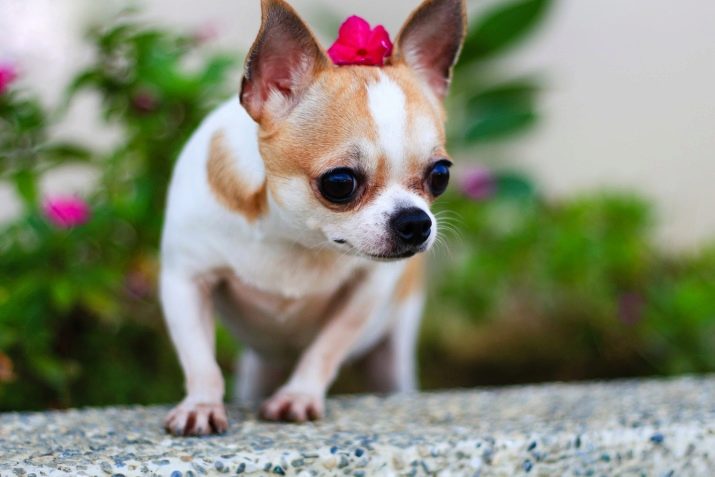
Where did the dogs appear?
For the first time, Chihuahua dogs have received close attention in the largest state of Mexico, Chihuahua, which borders Texas and New Mexico. In the middle of the 18th century, Mexican traders began selling local small long-haired and short-haired dogs as souvenirs and pets to people who came to see the sights. At that time there was still no common name for the breed, so the dogs were named after the name of the state in which they were met: Arizona, Texas, Mexican, etc.
At the end of the 19th century, American dog expert James Watson made an initial description of the breed, having bought it in the Mexican borderlands, where he specially came to check the truthfulness of rumors about pocket dogs, his first pet of the Mazantinu Chihuahua breed. After some time, the dog handler acquired several more smooth-haired representatives of the breed there, among which was the future champion Juarez Bella.
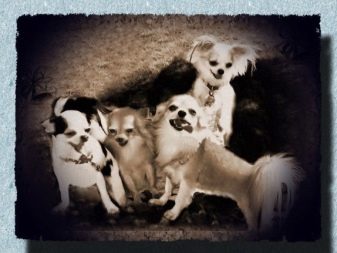
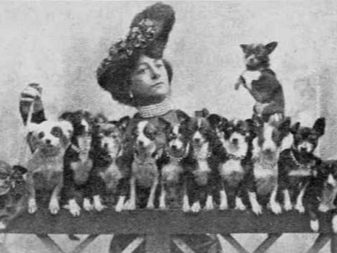
Singer Adeline Patti played a big role in popularizing the friendly pocket-sized doggie.When the opera diva came on tour to Mexico, the president presented her with a bouquet of flowers, in which a small dog was hidden. Later, the singer often took her favorite to performances, thanks to which many were able to see the Chihuahua live.
For the first time at the exhibition of the American Kennel Club, a representative of the smooth-haired Chihuahua breed could be seen by everyone in 1904. After 19 years, the first breed standard was drawn up, which included a description of only short-haired types of dogs, and after another five years the Chihuahua was recognized by the Canadian Kennel Club and included in the official list of breeds.
The first Chihuahua club was created in Britain in the middle of the 20th century. He was a member of the English Club and was involved in drawing up standards and maintaining the purity of the breed. The second standard, which also includes a description of long-haired Chihuahua species, was drawn up in the early 60s of the last century by the combined efforts of British and American dog handlers. At the end of the 20th century, Taco Bell brought in a Chihuahua named Gidget to create a commercial, whose appearance on the screen again drew public attention to the pocket dogs of the ancient breed.
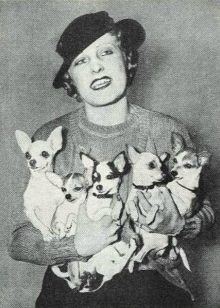


Where did they come from?
Man tamed the ancestors of the Chihuahua a long time ago, and the history of miniature dogs goes back to the distant past. There are several versions of the origin of the smallest dog breed.
One of the versions says that the homeland of the Chihuahua is ancient Mesoamerica during the civilization of the Mayan peoples, which existed since 2000 BC. NS. until 900 A.D. NS. The ancient Indians kept the ancestors of the Chihuahua (techichi) as companion dogs to help in the afterlife. Dogs were eaten, as well as mummified, and during burial they were placed in the grave, since the path of the soul of a deceased person to the kingdom of the dead ran through many dangerous places, and she needed a faithful assistant to overcome difficulties. The first images of techichi on the walls of the Mayan pyramids date back to the 18th century BC.
There is an assumption that one of the ancestors of the Chihuahua is the Chinese crested dog. The alien dogs that arrived on the ships of the conquistadors interbred with local techichi, laying the foundation for a new breed of dogs.

Another version transfers the history of the origin of the breed to Malta, where another small dog was bred - the Maltese lapdog or Maltese, whose ancestors are Melita. They are also recorded as the ancestors of the Chihuahua. Supporters of this version see confirmation of their theory in the fact that Chihuahua and Maltese have a similar shape of the skull, on which there is a soft spot, the so-called fontanelle.
Also an additional fact in the box of evidence is the fresco "The Calling and Test of Moses" by the famous artist Sandro Botticelli. The painting depicts a boy holding a small dog that strongly resembles a Chihuahua. The fresco is in the Sistine Chapel in the Vatican and was created several years before the discovery of America.
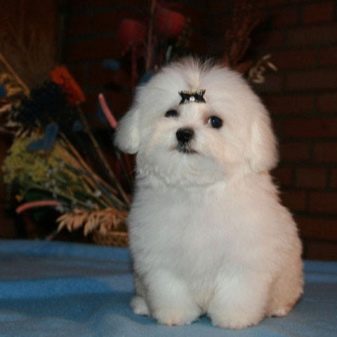
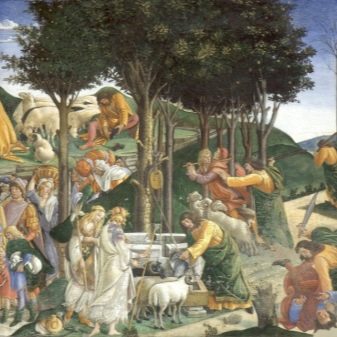
Some of the breed's connoisseurs attribute the origin of the dogs to Ancient Egypt, on the territory of which figurines and images of animals, somewhat reminiscent of a Chihuahua, were found. And because of the big ears and peculiar appearance, the fennec foxes living in North Africa are recorded as related to the dog.
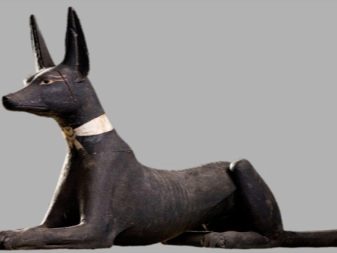
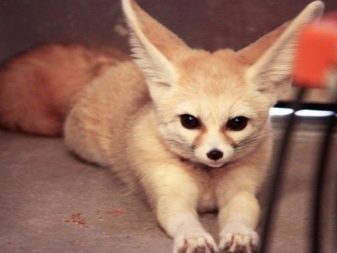
The main version describing the origin of miniature Chihuahua dogs is considered to be their appearance among the Toltecs, who came to the place of the Maya in the 9th century and inherited their customs. Dumb Leaks were twice the size of modern Chihuahuas and had a longer coat. As with the Maya, small dogs were for the Toltecs not only friendly and loyal companions in everyday life. They also accompanied their masters to the afterlife, providing every possible support to the soul of the departed.
Numerous images of a leak on the walls of tombs, on pottery, figurines in the form of a small dog indicate that the domestic dog was of great importance for the indigenous population of Mexico. The Aztecs who came to replace the Toltecs continued the traditions laid down by the Mayan empire. The Aztec country, which occupied the territory of modern Mexico, existed until the beginning of the 16th century, when it was captured and ruined by the famous conquistador Hernan Cortez, who led the Spanish expedition to the New World. The entire legacy of the Aztecs, among whom were the ancestors of the Chihuahuas, was subjected to destruction. Some of the dogs hid in the forests, in order to subsequently be tamed by new inhabitants who occupied the deserted territories.
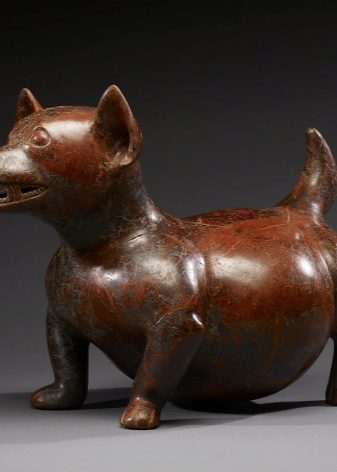

Modern scientific research on the Chihuahua has shed some light on the breed's origins. DNA tests from dogs have shown that no dog like the Chinese Crested can be the ancestor of Chihuahuas. Scientists at the Royal Institute of Technology at Stockholm conducted a comparative characterization of the genes of American, European and Asian dogs, as a result of which a complete lack of coincidences in the Chihuahua DNA with European and Asian breeds was revealed. On the other hand, the isolated unique genotype indicates a match with dogs living in pre-Columbian Mexico.
DNA studies have also shown that Chihuahuas have the greatest breed purity, dating back to ancient times. Such purity is ensured by the absence of dogs of different breeds and other canine species in the ancestors.
The apple head shape, characteristic of a purebred dog, also refutes the relationship with the Chinese crested, since those have a more angular skull shape. For the same reason, the relationship of the Chihuahua with the Mexican hairless dog Xoloitzcuintle, which some write down as the ancestors of the smooth-haired Chihuahua, is not recognized.

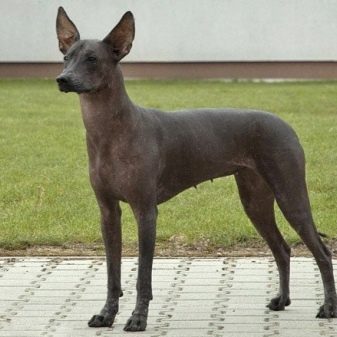
Appearance in Russia
The first Chihuahuas appeared in the USSR at a time when Nikita Sergeevich Khrushchev was the First Secretary of the CPSU Central Committee. During one of his visits to Russia, Fidel Castro presented Khrushchev with a couple of long-haired pocket dogs as a sign of friendship between peoples. They were male Mishter (the official name is Spanky Bambi Duke) and the girl Mushinka or Dona Tessa Duchess.
After some time, the dogs were donated to Evgenia Fominichna Zharova, the creator of the Russian Toy Terrier. The puppies received from the dog became the founders of the Russian branch of the Chihuahua, while Mushinka lived her life as a pet. She even starred in a movie once. Fly can be seen in the movie "The Elusive Avengers", where Buba Kastorsky walks in the company of a spectacular black-and-white long-haired tiny dog.
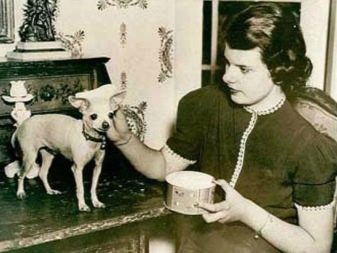

Characteristics
Chihuahuas gained their popularity not only because of their size and appearance, but also because of their character. When the breed standards were drawn up, special attention was paid to the behavioral features of purebred dogs. Chihuahuas are characterized by:
- speed of movement and speed of reaction;
- liveliness and curiosity;
- tirelessness and endurance;
- sheer friendliness and absolute fearlessness.
Cowardice and aggression are traits that disqualify the purity of the breed. Because of the behavioral characteristics, both heterosexual and same-sex individuals can get along well nearby.
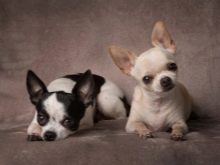


Friendly and cheerful Chihuahuas can accompany their mistresses, settling in a women's purse. Secular lionesses often use dogs as a stylish accessory, dressing them up in suitable outfits, and the pet calmly withstands all the procedures and fully trusts the person.
Their curiosity and ability to accept new things makes miniature dogs loyal friends, suitable for families with small children. Despite their small stature, Chihuahuas are fearless, bravely defending their masters.If an unfamiliar object does not show aggression, then after a while the dog accepts it and considers it his friend.
But despite all its friendliness, Chihuahuas are very touchy, especially if the punishment was unfair. Long-term negative feelings can lead to illness of the dog, as they are very emotional themselves and are sensitive to fluctuations in the emotions of the owner.



Therefore, if you want to have a faithful, fearless and healthy friend, then love, appreciate and never offend your pet, and his love will be enough for everyone.
For the history of the Chihuahua breed, see the following video.






































